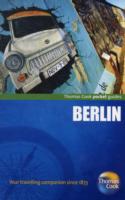- ホーム
- > 洋書
- > 英文書
- > History / World
Full Description
Les ateliers de céramique de la Byzacène du Sud-Ouest is the result of more than three decades of investigation, examining ceramic workshop dumps in the southwest region of Byzacena. Over this period, we have had the rare opportunity to uncover the remains of seven workshops, three of which are still unpublished. Our research unfolded in two main phases : the first focused on locating, identifying, and distinguishing between endogenous and exogenous production in the region, particularly the so-called "classic" types. During the second phase, our efforts shifted to detecting, exploring, and prospecting for new production centers, as well as on the typological, mineralogical, and petrographic analysis of the various products, aimed at disentangling regional production from one another and defining their distribution areas.
The task was challenging, especially given the often-pronounced similarities in the clays used and the forms produced. Beyond this technical aspect, which includes body types, slips, shapes, typologies, motifs, and decorative styles, our research stands out for its diachronic approach. This approach reveals the historical factors—both economic and political—that contributed to the the appearance, development, and extinction of these workshops. Additionally, our study of the ceramic rejects from the eight workshops, the subject of this work, revealed a spatial distribution from east to west, with a designated catchment area for each production center and a categorical distribution of types. Chronologically, our findings revealed a synchronisation in the emergence and decline of these workshops and identifying a peak period of activity and production.
Contents
Avant-propos
Introduction générale
Première partie: La Byzacène du Sud-Ouest : contrée des défis romains
Chapitre I: Le cadre géo-historique
La Byzacène du Sud-Ouest : aperçu géographique
Aperçu historique
Chapitre II: Les ateliers de céramique : diversités, différences et exigences
Les ateliers de la Byzacène du Sud-Ouest : localisation et caractéristiques générales
Approches et difficultés ou subjectivité et limites
Typologies et chronologie
Deuxième partie: Ateliers et productions
Chapitre I: Les ateliers de la zone est
I- L'atelier de Henchir en-Nadhour
II- L'atelier d'Aïn er-Rchiha
Chapitre II: Les ateliers de la zone ouest
I- L'atelier de Sidi Aïch
II- L'atelier de Henchir el-Mzara (inédit)
III- L'atelier de Hr es-Souinia (inédit)
IV- L'atelier de Thelepte
V- L'atelier de Sidi Abdelkader
VI- L'atelier de la Table de Redeyef (inédit)
Troisième partie: Vue panoramique sur les faciès céramiques de la Byzacène du Sud-Ouest
Chapitre I: Les productions de céramique en Byzacène du Sud-Ouest : répartition et commercialisation
Les productions : répartition spatiale et catégorielle
La commercialisation
Chapitre II: La production de céramique en Byzacène du Sud-Ouest, approche diachronique
Conclusion générale
Catalogues
Bibliographie








